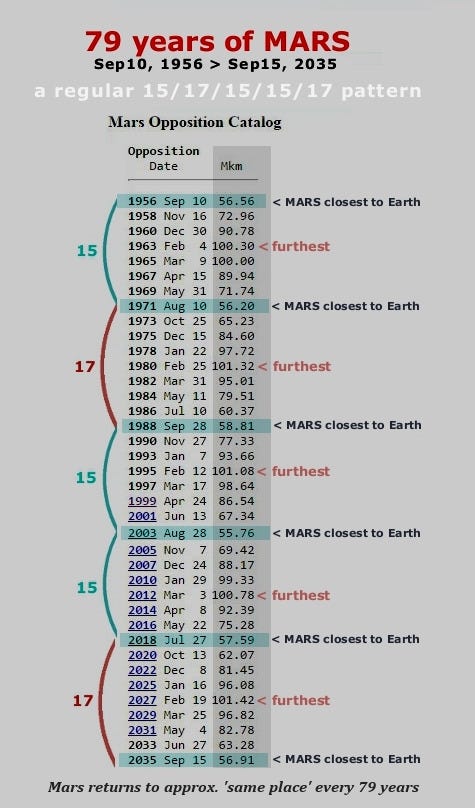Contemplating Mars for Mars retrograde…

Photo by SIMON LEE on Unsplash
Today Mars goes retrograde and I think it’s a good time to explore Mars’ behaviour. If we understand the mechanics of our will, drive and motivations (Mars), we can better understand ourselves.
If you check your solar return (birthday chart) you will see Mars return to the same point of your birth Mars at 32 years, 47 years, 62 and 79 years on your birthday. But why so random?
The Sumerians called Mars šanûmma “different” or sarru “liar” or aha “strange”1. It was also called the False Planet.2
Mars is a headache. Not because Mars rules Aries and Aries rules the head. Yes, that is true! But because Mars is unpredictable. It does not have regular synodic cycles like the Sun and the Moon, Venus and the Sun or any other planet; all of which are predictable.
“For Mars alone enables us to penetrate the secrets of astronomy which otherwise would remain forever hidden from us.” – Johannes Kepler, from his dedication in “Astronomia Nova” (1609)
Mars was a headache for Kepler; One he thought he would solve in weeks. But it took Kepler over 5 years to solve the problem of Mars – At least, we all seem to agree that he solved it. But when you examine it further you realize he did not!
In 79 years, Mars will return to the same sign and degree—almost! To predict Mars’s cycle, the Mesopotamians calculated 79 + 79 + 47.
The Mayans in the Dresen codex used the sidereal cycle (measuring Mars against a fixed star) to calculate the Mars cycle. They discovered that Mars has two sidereal cycles. A short and a long one. Mars would return to the same sidereal star in the sky in either 707 days or 546 days3
They also observed that Mars had two sidereal cycles. The pattern they found is seven long cycles and then a short cycle. Then six long cycles and then a short one. This amounted to a 15-year and a 17-year cycle. When added together, this cycle equalled 32 years. But that still did not make Mars completely predictable. To predict the cycle they needed to alternate the 15 and 17 year cycles.

Though slightly different the Mesopotamians and the Mayans both agree. Neither used the synodic cycle of Mars to predict the cycle… as it was not predictable, they used a fixed star.
The Mesopotamians and the Mayans figured out how to predict Mars, but they didn’t explain why it behaved the way it did.
“So, Fabricius, I already have this: that the most true path of the planet [Mars] is an ellipse, which Dürer also calls an oval, or certainly so close to an ellipse that the difference is insensible.” – Johannes Kepler
After 5 years, Kepler finally had the answer. Mars moved as it did because it was moving in an ellipse. If the true path of Mars is an ellipse, it fails to explain how Mars would seem to speed up only in the 15th and 17th years. For this reason, Kepler’s explanation fails.
I hope to re-do this video soon as the audio quality is not the best, but in it, I share a bit more about Mars’ orbit and how the Tychos model4 explains it. I also go into how understanding Mars will help us understand our motivations and drives.
Mars is retrograde until Feb 24, 2025. Lots of time to review what motivates and drives us!
https://www.youtube-nocookie.com/embed/Mq07Vb695W8?rel=0&autoplay=0&showinfo=0&enablejsapi=0
MESOPOTAMIAN ASTROLOGY An Introduction to Babylonian and Assyrian Celestial Divination BY ULLA KOCH-WESTENHOLZ, 1995
Pg 56 David Brown, 2000
Ancient Maya documents concerning the movements of Mars Harvey M. Bricker*†, Anthony F. Aveni‡, and Victoria R. Bricker* *Department of Anthropology, Tulane University, 1021 Audubon Street, New Orleans, LA 70118; and ‡Department of Physics and Astronomy, Colgate University, 13 Oak Drive, Hamilton, NY 13346 Contributed by Victoria R. Bricker, December 11, 2000
Tychos.space